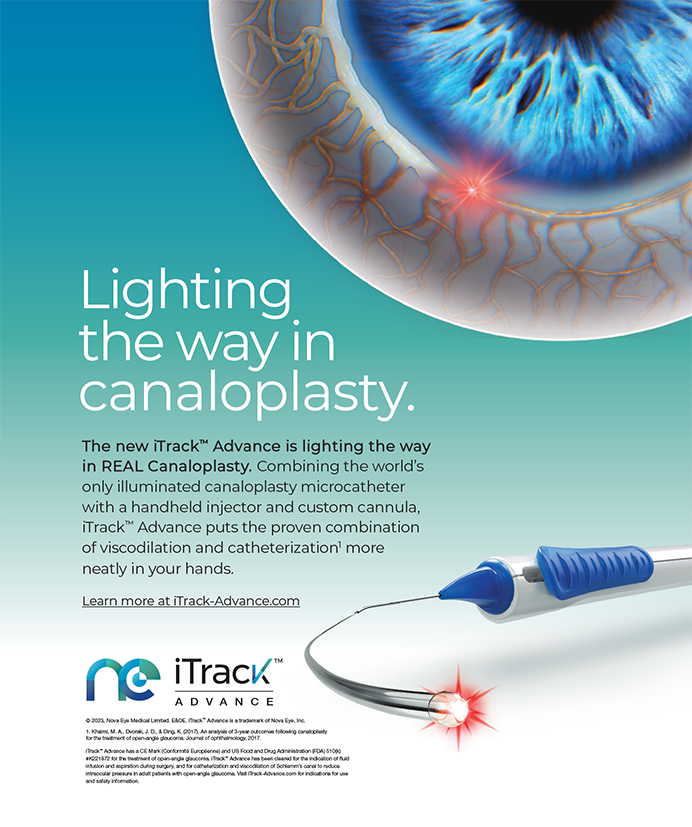Do you use intracameral antibiotics routinely, for specific cases, or never in your practice?
Elizabeth A. Davis, MD
In our practice at Minnesota Eye Consultants, we have been using vancomycin in the irrigating fluid for several years. Our incidence of endophthalmitis is extremely low, and we have not experienced any adverse events as a result of this additive. Postoperatively, patients take a fourthgeneration fluoroquinolone. More complex cases may also receive a subconjunctival antibiotic, but this is not routine.
Eric D. Donnenfeld, MD
I routinely use intracameral antibiotics in all of my cataract surgeries, and I believe that the famous bank robber, Willie Sutton, provides the best explanation for this practice. When asked why he robbed banks, he replied, “Because that is where the money is.” I use intracameral vancomycin on all of my cataract surgeries, because that is where the organisms responsible for endophthalmitis produce an infection. In my practice, we attempt to reduce the bacterial load on the ocular surface by having patients use a topical fourth-generation fluoroquinolone for 3 days preoperatively. At the end of surgery, patients receive an intracameral injection of vancomycin 1 mg in 0.1-mL balanced salt solution. After surgery, patients continue the topical fluoroquinolone for 10 days. This antibiotic prophylaxis is in addition to our usual eyelid drape to sequester the lashes and povidone-iodine preparation at the time of surgery.
Mitchell C. Shultz, MD
At the 2010 Annual Meeting of the American Society of Cataract and Refractive Surgery, Steve Arshinoff, MD, FRCS, reported no incidences of endophthalmitis for 8,000 consecutive same-day bilateral cataract surgery cases injected with intracameral vancomycin at the conclusion of surgery.1 Although same-day bilateral cataract surgery has not been adopted in the United States, the data for doing so are very compelling. With the rise of methicillin-resistant Staphylococcus aureus-related infections in hospitals as well as community settings, I have adopted Dr. Arshinoff's protocol for intraoperative injection of intracameral vancomycin 1 mg in 0.1-mL balanced salt solution. I inject a total of 0.2 mL, slightly infiltrating the main incision with the solution. Since adding intracameral antibiotics to my regimen, I have not seen any cases of endophthalmitis associated with routine cataract surgery.
Karl G. Stonecipher, MD
At our center, we include antibiotics in the infusion for phacoemulsification. We aggressively treat ocular surface disease preoperatively and postoperatively. All of my patients are started on an antibiotic, corticosteroid, and nonsteroidal anti-inflammatory drop three times per day 3 days preoperatively. I treat all health care and animal husbandry workers with additional antibiotic coverage based on their exposure. With this regimen, in more than 35,000 cases, I have yet to have a case of endophthalmitis. At this time, I do not think intracameral antibiotics in their present form are beneficial. I would consider a commercially approved option if it were available.
William B. Trattler, MD
Intracameral antibiotics have been shown in scientific studies to reduce the risk of endophthalmitis. The problem, however, is that an FDA-approved intracameral antibiotic does not exist, and there is some risk with using intracameral antibiotics that are created by compounding pharmacies. With the high volume of cataract surgeries performed in the United States, having a safe and proven intracameral antibiotic would be beneficial to our patients. I am hopeful that there will be a good solution in the near future, but at this point, I wait on the sidelines for an antibiotic that can be used with little risk to patients.
Section Editor John F. Doane, MD, is in private practice with Discover Vision Centers in Kansas City, Missouri, and he is a clinical assistant professor with the Department of Ophthalmology, Kansas University Medical Center in Kansas City, Kansas. Dr. Doane may be reached at (816) 478-1230; jdoane@discovervision.com.
Elizabeth A. Davis, MD, is an adjunct clinical assistant professor of ophthalmology at the University of Minnesota and is managing partner of Minnesota Eye Consultants, Minneapolis. Dr. Davis may be reached at (952) 888-5800; eadavis@mneye.com
Eric D. Donnenfeld, MD, is a professor of ophthalmology at NYU and a trustee of Dartmouth Medical School in Hanover, New Hampshire. Dr. Donnenfeld may be reached at (516) 766-2519; eddoph@aol.com.
Mitchell C. Shultz, MD, is in private practice in Northridge, California, and is an assistant clinical professor at the Jules Stein Eye Institute, University of California, Los Angeles. Dr. Shultz may be reached at (818) 349-8300; izapeyes@gmail.com.
Karl G. Stonecipher, MD, is the director of refractive surgery at TLC in Greensboro, North Carolina. Dr. Stonecipher may be reached at (336) 288-8523; stonenc@aol.com.
William B. Trattler, MD, is the director of cornea at the Center for Excellence in Eye Care in Miami. Dr. Trattler may be reached at (305) 598-2020; wtrattler@earthlink.net.
- Arshinoff SA, Bastianelli P. Endophthalmitis, intracameral antibiotics, and bilateral cataract surgery. Paper presented at: The Annual Meeting of the ASCRS; April 12, 2010; Boston, MA.


